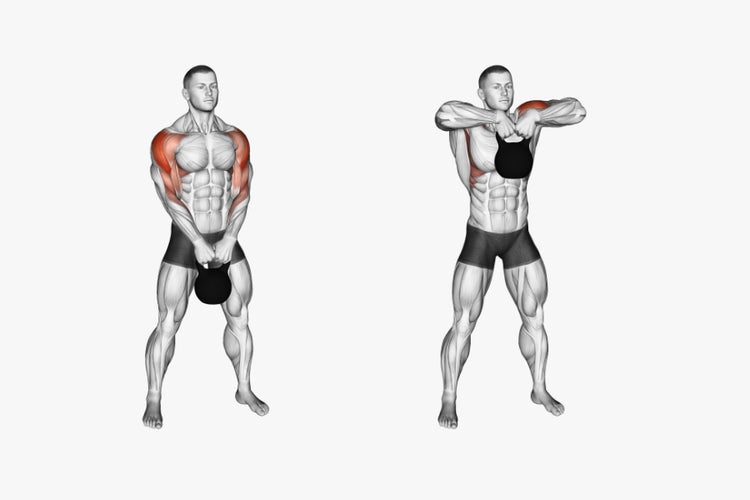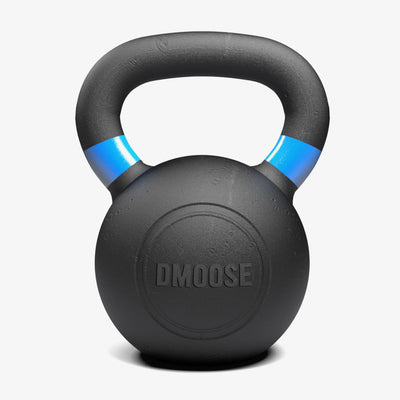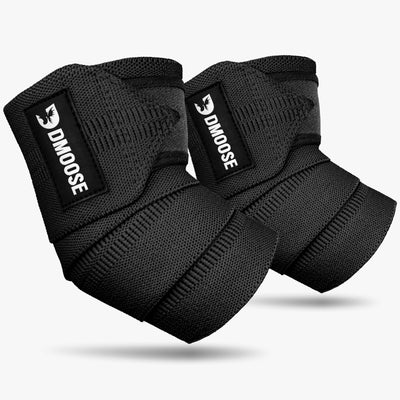Building strong and stable shoulders is essential, not just for lifting heavier weights but for everyday movements that keep you pain-free and confident.
Kettlebell workouts offer a powerful solution by targeting the muscles that support shoulder health while improving coordination and balance. Their dynamic movements engage your entire shoulder complex in ways that traditional exercises often miss.
This blog highlights five kettlebell exercises designed to enhance shoulder strength and stability, helping you move better, lift smarter, and stay injury-resistant.
Understanding the Shoulders

The shoulder is a complex ball-and-socket joint made up of three bones: the scapula, clavicle, and humerus. It offers an impressive range of motion but sacrifices stability, making it prone to injuries like dislocation.
Key muscles stabilize and move the shoulder, including the deltoids, rotator cuff group, trapezius, and serratus anterior. The deltoids control arm movements in all directions, while the rotator cuff stabilizes the joint. The trapezius manages scapular movement and posture, and the serratus anterior supports scapula stability during overhead motions.
Because of its delicate structure, strengthening these muscles is essential to maintain shoulder stability and prevent injury. Kettlebell exercises effectively target these muscle groups to build strength and endurance, helping you keep your shoulders healthy and strong.
Related Article: What Are Deltoid Muscles? 6 Best Shoulder Isolation Exercises for Men to Get Bigger Deltoids
Why Choose Kettlebells Over Dumbbells?

Kettlebells offer a dynamic and versatile approach to fitness that goes beyond what traditional dumbbells can provide. Let’s dive into the key reasons why kettlebell training can accelerate your progress and offer a unique edge to your fitness routine.
Allows Free Movement
Kettlebells allow for a greater range of motion compared to dumbbells. Their unique design enables free movement, challenging your muscles with unexpected twists and turns, which boosts strength and flexibility.
Helps in Explosive Movements
Kettlebell exercises often include explosive actions like swings and snatches, which develop power, balance, and coordination by training your body to stabilize itself through various planes of motion.
Adds Functional Element to Traditional Weightlifting
These weights mimic real-life movements, making your muscles more adept at daily activities by incorporating thrusting and dynamic motions into your workouts.
Supports Several Muscle Groups
Kettlebell workouts engage multiple major muscle groups simultaneously, offering a full-body workout in fewer exercises, unlike adjustable dumbbells that tend to focus on isolated movements.
Related Article: 10 Kettlebell Exercises That Will Tone Your Entire Body
5 Kettlebell Shoulder Workouts
Kettlebells have become increasingly popular in recent years as a versatile training tool for a variety of exercises. One area where kettlebells are particularly effective is building shoulder strength and stability. Let’s explore five kettlebell shoulder workouts designed to help you develop stronger, more stable shoulders.
1. Single-Arm Kettlebell Swing

The single-arm kettlebell swing is a dynamic full-body exercise that emphasizes shoulder strength while engaging multiple muscle groups including the glutes, core, and upper back. Using a kettlebell adds a unique challenge due to its off-centered weight, which requires greater shoulder stability and coordination compared to traditional weights.
This movement not only builds explosive power but also enhances grip strength and anti-rotational core control, making it highly effective for functional fitness and athletic performance. The kettlebell's momentum-based nature encourages efficient muscle activation, promoting strength and endurance.
How to Perform Single-Arm Kettlebell Swing:
- Stand with feet slightly wider than shoulder-width apart.
- Lower hips and knees while extending one arm to the side.
- Grip the kettlebell with the working hand, positioned between your feet.
- Keep your back straight and core engaged, kettlebell just behind knees.
- Explosively thrust hips forward, swinging the kettlebell upward.
- Allow the kettlebell to swing back down behind the knees to reset.
2. American Kettlebell Swing
The American kettlebell swing is a powerful compound exercise that engages multiple muscle groups simultaneously, including the hamstrings, glutes, core, shoulders, arms, and back. This makes it an excellent choice for building full-body strength and power while improving coordination and balance.
Additionally, the American kettlebell swing provides cardiovascular benefits and enhances flexibility and range of motion. It’s a versatile workout that combines strength, endurance, and mobility all in one.
How to Perform American Kettlebell Swing:
- Stand upright holding the kettlebell firmly in your hands.
- Keep arms relaxed, engage your core, and squeeze shoulder blades together.
- Bend knees slightly and push hips back, shifting weight onto your heels.
- Drive through your heels, extend your hips, and swing the kettlebell overhead.
- Snap hips forward, contract core, and squeeze glutes at the top of the movement.
- Let the kettlebell swing back between your legs as you hinge at the hips, loading your hamstrings and glutes.
- Repeat by driving hips and heels forward, maintaining control throughout.
3. Kettlebell Vertical Row

The kettlebell vertical row is an effective exercise for building bigger, stronger shoulders while also targeting the upper back muscles. It enhances shoulder definition and helps improve posture by engaging the rhomboids and trapezius.
This movement demands proper form to maximize muscle activation and avoid injury, making it ideal for those aiming to develop balanced and powerful shoulders. Learn more about stronger shoulders here.
How to Perform Kettlebell Vertical Row:
- Stand with feet shoulder-width apart, gripping the kettlebell with both hands.
- Engage your core and pull the kettlebell upward by raising your elbows close to shoulder height.
- Keep elbows elevated above wrist level throughout the movement.
- Lower the kettlebell by straightening your arms before starting the next repetition.
- Repeat for the desired number of reps with controlled movement.
4. Kettlebell Shoulder Press

The kettlebell shoulder press is a fundamental exercise to build strength and stability in the shoulders. Whether performed with one or two kettlebells, this movement promotes muscular balance and helps enhance overall shoulder function.
Maintaining an engaged core and keeping the shoulder blades retracted throughout the press ensures better stability and reduces the risk of injury, making it an essential part of any shoulder workout routine.
How to Perform Kettlebell Shoulder Press:
- Stand with feet shoulder-width apart and knees slightly bent.
- Hold a kettlebell in each hand at shoulder height, elbows bent.
- Press the kettlebells overhead while keeping elbows close to your ears.
- Slowly lower the weights back to the starting position.
- Repeat for 10-12 controlled repetitions.
5. Single-Arm Kettlebell Z Press
The single-arm kettlebell Z press targets the shoulders, chest, and arms while engaging the core for stability. Sitting during this exercise emphasizes shoulder strength and improves posture by isolating the upper body muscles.
This controlled overhead pressing movement challenges balance and coordination, making it a valuable addition to shoulder training that also supports functional fitness.
How to Perform Single-Arm Kettlebell Z Press:
- Sit on the floor with legs extended and slightly apart.
- Grip a kettlebell with an overhand hold, keeping it close to your body.
- Press the kettlebell overhead, fully extending your arm and locking out the elbow.
- Slowly lower the kettlebell back down to shoulder level.
- Complete the assigned repetitions, then switch arms.
Related Article: The Shoulder Blaster Workout for Intermediate Fitness Enthusiasts
FAQs
1. Do kettlebell swings build shoulders?
Kettlebell swings engage multiple muscle groups including the shoulders, abs, pecs, glutes, quads, hips, hamstrings, and lats. They also improve grip strength, making them a highly effective full-body exercise.
2. Are kettlebell workouts good for shoulders?
Kettlebell exercises strengthen shoulder muscles, especially the rotator cuff, which stabilizes the shoulder joint and reduces injury risk. Additionally, kettlebells improve grip strength, enhancing performance in other sports and daily activities.
3. What happens if you do 100 kettlebell swings a day?
Performing 100 kettlebell swings daily can improve posture, reduce back pain, boost testosterone and growth hormone levels, and help establish a consistent fitness habit.
4. How do kettlebells improve shoulder stability?
Kettlebell exercises require controlled, multi-directional movements that engage the small stabilizing muscles around the shoulder joint, enhancing overall shoulder stability and preventing injuries.
5. Can kettlebell training help with shoulder mobility?
Yes, the dynamic and functional nature of kettlebell movements improves joint mobility by encouraging full range of motion while strengthening the surrounding muscles.
6. How often should I include kettlebell shoulder workouts in my routine?
For optimal strength and stability gains, incorporating kettlebell shoulder exercises 2 to 3 times per week, with proper rest in between, is recommended.
Key Takeaways
Kettlebells are perfect for shoulder workouts because their unique design demands greater stability, making your muscles work harder for better results. These five kettlebell exercises focus on building both strength and stability while emphasizing proper form to maximize effectiveness.
Requiring minimal equipment, these workouts are ideal for anyone looking to improve shoulder health without needing a full gym setup. Give these exercises a try and experience how efficiently they can enhance your shoulder strength and stability—your journey to stronger, healthier shoulders starts here!














